North Korea: Warning Signs of Drought for the Rice Crop
Rice is one of the major staple foods in North Korea. Rice paddies account for the majority of arable land, especially in the eastern provinces. Rice production is concentrated in the regions of North Pyongyang, South Pyongyang, and South Hwanghae. The major rice growing season is May through October, and the optimum sowing window is during May and June. The analysis of a variety of crop-condition indicators derived from remote sensing (including precipitation, drought monitors, and vegetation indices), suggests that North Korea is experiencing early-season drought. Due to the lack of reliable agricultural data from North Korea, USDA relies on these remote-sensing tools to qualitatively monitor crop conditions and assess the impact of crop stress for North Korea’s crops. USDA estimates 2017/18 North Korea rice production at 1.6 million metric tons (milled basis).
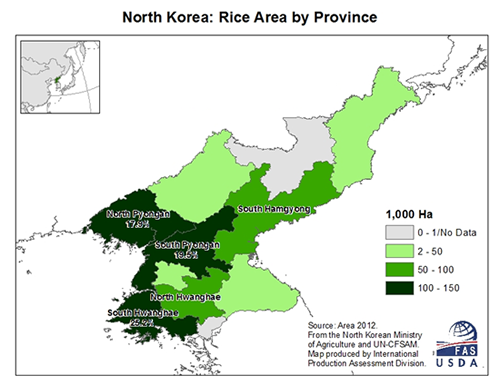
Precipitation anomalies indicate severe dryness at the start of rice sowing in May compared to the favorable conditions in 2016. Temporal and spatial rainfall data, drought-index models, and soil moisture data also indicate drought conditions. The SPI (Standard Precipitation Index), a measure of drought severity, has been consistently negative, indicating abnormally dry to severely dry conditions during May and June.
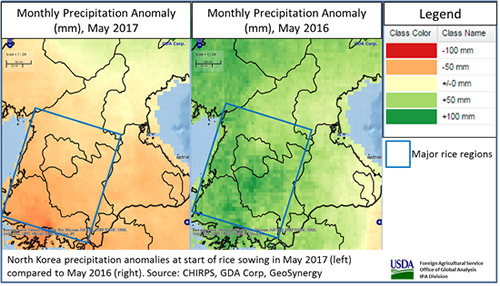
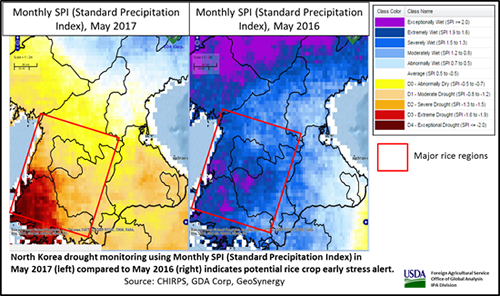
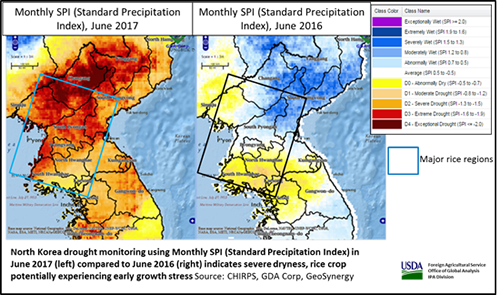
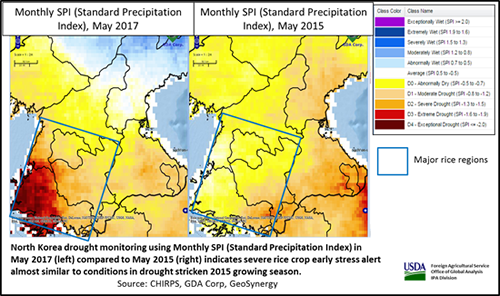
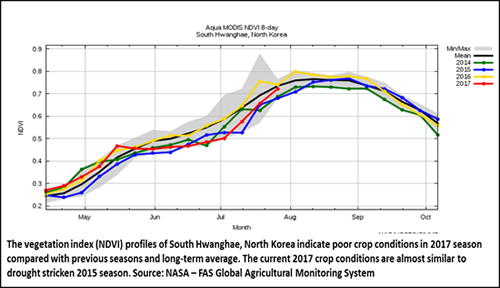
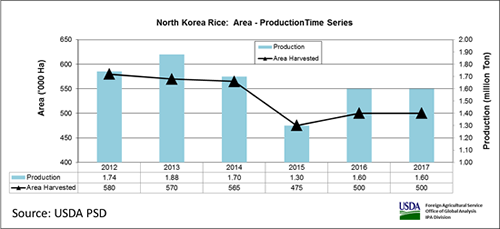
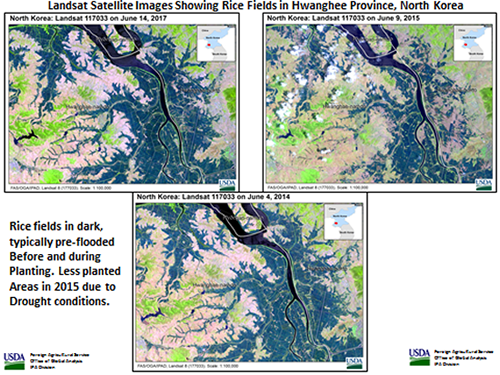
In 2015 North Korea experienced severe drought conditions that significantly reduced national rice production and led to severe food shortages. It is early in the 2017 season; however, current conditions for 2017 are following the same trajectory as in 2015. Although the range of final yield prospects for 2017 is still wide, information on developing drought is useful to international humanitarian agencies that operate in North Korea and rely on early warning and reliable crop condition monitoring data for organizing emergency response and food aid interventions. Widespread above-average rainfall will be needed during the next couple months to improve crop-development conditions.
Current USDA area and production estimates for grains and other agricultural commodities are available on IPAD's Agricultural Production page or at PSD Online.
Visit Crop Explorer http://www.pecad.fas.usda.gov/cropexplorer/
|

